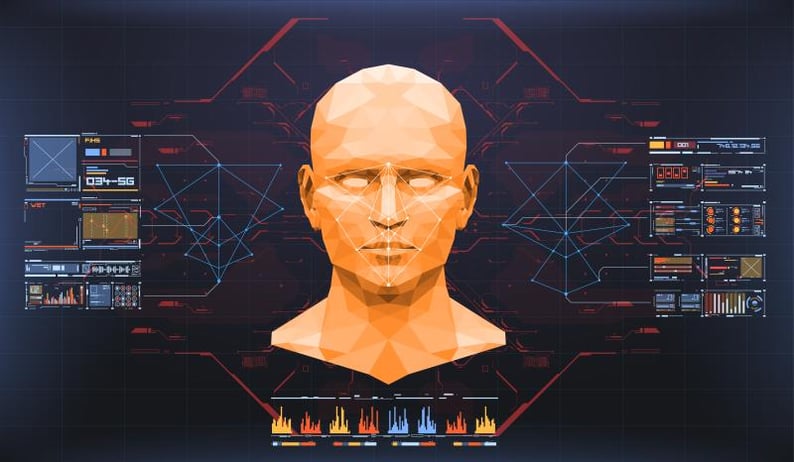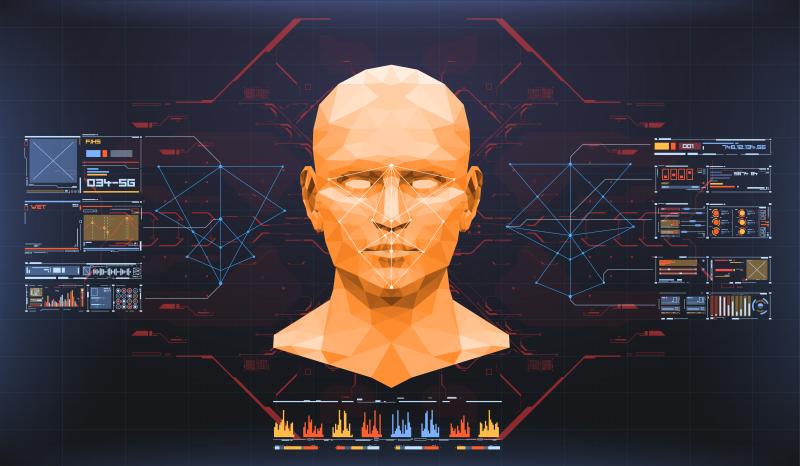Text-to-Speech AI Voice Generator: Creating a Human-like Voice

The latest technologies in voice synthesis and recognition are constantly disrupting the industry. Over the past few years, breakthrough technologies, including generative AI, have led to massive advancements.
Today, voice robots have already taken over most of the routine tasks of call centers, and AI is able to not only understand human speech and recognize emotions but also keep conversations going.
When communicating with a voice chatbot, it can be challenging to distinguish a robot’s voice from a person’s. However, this level of voice quality is only possible when working with the right AI voice generator. Otherwise, the result will be a robotic voice full of inaccuracies. AI voice synthesis plays a crucial role in achieving natural and engaging interactions with automated systems.
This article will go over the components that make up a sufficient text-to-speech software and how to apply it in your business.
What is Text-to-Speech voice synthesis (TTS)?
Text-to-speech voice synthesis is a computer simulation of human speech from text with the help of machine learning techniques. Developers use TTS to create voice robots, such as IVR (Interactive Voice Response).
The technology allows businesses to save time and money by automatically generating a voice, eliminating the need for studio recording (and re-recording) every time a script is adjusted.
A TTS application can read a text in a voice almost identical to a human voice. And although the best representatives of TTS technologies are able to achieve impressive quality, you will most likely still be able to tell that it is a robot's speech. However, TTS is applicable to a range of use cases.
Text-to-Speech business applications
Here’s a shortlist of the most common use cases for text-to-speech voice generation:
-
Intelligent IVR. A voice robot responds to customer requests without involving live operators.
-
Voice alerts. Ability to deliver important notifications to your customers worldwide in their native language via phone calls.
-
Voice over the content. With the help of speech synthesis, you can create voices for audiobooks, SMS messages, documents, and websites. This simplifies the task of automating the content creation process for people who have problems with reading and writing (for example, visual impairment) or for those who are not comfortable reading text and are ready to listen to the necessary information.
-
Creating a brand voice. You can give the artificial voice its own character, which will be associated with the brand.
-
Voice assistants. Voice control makes completing daily tasks simple: ordering dinner, buying goods, etc. Speech synthesis can be used to create voice assistants such as Siri, Alice, Marusya, and others.
-
Call localization. It is pretty costly for an international company to hire employees who speak different languages. In this case, synthesized speech is more economic for a business since it is able to translate words into another language.
-
Screening of applicants. Speech synthesis can be used to automate mass recruitment. With the help of voice, you can conduct interviews and select candidates.
-
Users support. Most call centers automate calls. Voice robots perform simple tasks that can be automated — for example, providing the client with account information, giving instructions on how to solve a typical problem, etc. This helps people focus on more complex projects.
-
Voice notifications. Voice robots can call customers to notify them of new promotions and promotional offers or conduct surveys to collect marketing information.
And although there are a lot of options for using the technology in business, it has its own significant drawbacks related to the quality of the generated audio content.
The shortcomings of most TTS applications
To achieve a natural-sounding voice with text-to-speech synthesis, software should be capable of producing critical nuances, such as voice tone, stresses, pauses, cadences, and so on. Almost all text-to-speech applications fail to perform this complicated task, leading to low-quality results.
The most widespread TTS software shortcomings are:
- Inability to properly convey emotions
- Limited vocabulary and languages
- Slow synthesis process
- Inaccuracies
- Robotic sounding voices
These points may significantly affect the result and lead to unpleasant business outcomes. This is obvious since nobody wants to listen to low-quality, robotic voices. This is where speech-to-speech voice cloning steps in. Speech to speech technology enables the recreation of natural-sounding voices, enhancing the quality and authenticity of audio content.
Speech-to-Speech (STS) voice cloning to improve TTS speech quality
So what is speech-to-speech voice synthesis? It is an AI-powered technology that uses one person’s speech (not text) to generate speech in another person’s voice.
With speech-to-speech voice cloning technology, you can make your own voice sound like anyone you want. You can learn more about the difference between these two technologies in this blog post. So how exactly can STS help to make TTS voices sound natural?
Well, it turns out that if we apply STS technology to a voice that was generated using TTS, this significantly improves the quality of the latter. Some elements of the voice get cleaned up, the prosody becomes more natural, and the general perception of the speech is improved.
Additionally, voice to voicetechnology can further enhance the naturalness and authenticity of the synthesized voice, providing an even more seamless listening experience. You might ask, “isn't this procedure too complicated?” and “why not use the STS technology right away, because it delivers better results than the classic TTS?
As it turns out, when these two technologies are used in conjunction, you get the benefits of both while eliminating the potential drawbacks:
-
You still enjoy all the benefits that working with text delivers, including ease of content adjustment
-
You don’t have to reach out to voice actors for dubbing your text. Instead, you can work with a recorded voice or use one from Respeecher’s Voice Marketplace.
-
You can also easily use multiple voices at once to generate speech from text
-
The quality of the voice is sufficiently improved
-
You can scale voice production quickly while almost entirely eliminating production hassles
Now the entire cycle of voice production can be completed by a single sound engineer and scriptwriter. No actors or studio work is required.
If you are a TTS provider, Respeecher can create custom datasets for you to train your TTS systems so it can learn to speak multiple voices, enhancing their capabilities with AI voice synthesis.
In addition, we have developed our own TTS system and would be happy to provide you with sample voices. Reach out to learn more today.
FAQ
Text-to-Speech (TTS) voice synthesis is an AI-powered technology that converts written text into human-like speech. It's widely used for applications like voice assistants, voice over content, and automated notifications, helping businesses enhance customer experiences with synthetic voice solutions.
Speech-to-Speech (STS) voice cloning enhances TTS technology by improving the natural-sounding voice generation, refining prosody, and adding emotional depth to synthesized voices. It makes AI voice synthesis more authentic, addressing common issues like robotic-sounding voices and improving overall speech synthesis quality.
Text-to-Speech (TTS) has many business applications, such as automated voice production, intelligent IVR systems, voice assistants, and content localization. It enables AI-powered speech synthesis for customer support, advertising, and creating synthetic voice solutions for global communication.
Speech-to-Speech (STS) voice cloning enhances accessibility by converting one person’s voice into another’s, improving the experience for those with speech impairments or language barriers. It helps create natural-sounding voices for assistive technology, fostering inclusion through better AI-powered speech synthesis.
Combining TTS and STS technologies allows businesses to leverage the advantages of both, improving voice cloning quality and scalability. TTS ensures easy content generation, while STS enhances the natural-sounding voice and emotional depth, creating seamless, high-quality audio experiences.
Glossary
Text-to-Speech (TTS)
Speech-to-Speech (STS)
Voice Cloning Technology
A process that uses AI voice synthesis and AI-powered speech synthesis to replicate a person's voice, enabling natural-sounding voice generation and synthetic voice solutions for various applications.
Synthetic Voice Production
The creation of natural-sounding voice generation through AI-powered speech synthesis, Text-to-Speech (TTS), and voice cloning technology for automated voice production.
AI Voice Generator

- voice synthesis
- voice cloning
- artificial intelligence
- AI voice synthesis
- machine learning
- synthetic speech
- text-to-speech (TTS) synthesis
- speech-to-speech (STS) voice synthesis
- voice synthesizing technology
- synthetic voices
- voice cloning technology,
- speech synthesis
- generative AI
- Respeecher Voice Marketplace
- voice maker
- voice to speech
- text to speech generator





